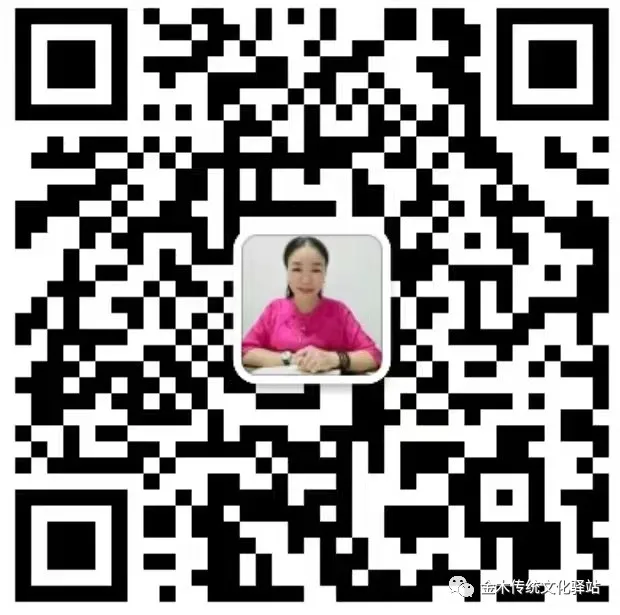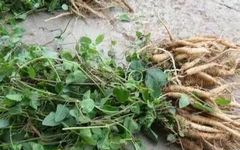Introduction to Dang Shen (Codonopsis pilosula) and Its Benefits
Over 5000 types of medicinal materials are introduced, sharing the efficacy and functions of one herb each day to help more people understand the knowledge of Chinese medicinal materials~~~
Spreading knowledge of Chinese medicine and promoting traditional Chinese culture!
Chinese medicine features unique herbs, and do you know about Dang Shen? What are the benefits and functions of Dang Shen? What are the methods of use, dosage, and precautions? Let’s learn about the efficacy, usage, and precautions of Dang Shen.
Introduction to Dang Shen
【Common Name】Dang Shen
【Other Names】Dang Shen (《本草从新》)
【Category】Root
【Synonyms】Shang Dang Ren Shen (《本经逢原》), Huang Shen (《百草镜》), Shi Tou Shen (《翁有良辨误》), Zhong Ling Cao (《青海药材》).
【Source】The root of the plant Codonopsis pilosula from the Campanulaceae family.
【Plant Morphology】
Dang Shen, also known as Liao Shen, San Ye Cai, Ye Zi Cao, is a perennial herb. The root is long and cylindrical, with a diameter of 1 to 1.7 cm, and has a swollen root tip with multiple tuberous stem scars. The outer skin is milky yellow to light gray-brown, with longitudinal and transverse wrinkles.
The stem is twining, long, and branched, with rough white hairs at the lower part and smooth or nearly smooth at the upper part.
The leaves are opposite, alternate, or whorled: they have petioles that are 0.5 to 4 cm long, covered with sparse soft hairs; the leaf blades are ovate or broadly ovate, 1 to 7 cm long and 0.8 to 5.5 cm wide, with a blunt or pointed tip, and a truncate or shallowly heart-shaped base, with entire or slightly wavy margins. The upper surface is green and covered with coarse hairs, while the underside is pale green and densely covered with soft hairs.
The flowers are solitary with slender pedicels; the calyx is green with 5 lobes, the lobes are long oval and acuminate, smooth or slightly hairy; the corolla is broadly bell-shaped, 2 to 2.5 cm in diameter, pale yellow-green with light purple spots, with 5 lobes that are triangular to broadly triangular and erect; there are 5 stamens, with the filaments expanded below the middle; the ovary is superior, with 3 chambers and numerous ovules, the style is short, and the stigma is very broad and funnel-shaped.
The capsule is conical, with 3 chambers and persistent calyx. The seeds are small, brown, and shiny. The flowering period is from August to September, and the fruiting period is from September to October. It grows in mountainous shrublands and forest edges, distributed in Northeast China, Hebei, Henan, Shanxi, Shaanxi, Gansu, Inner Mongolia, and Qinghai.
【Collection】
Harvest in autumn, remove the aerial parts, wash off the soil, and sun-dry until half-dry. Rub with hands or a wooden board to make the skin and wood parts adhere tightly and become plump and soft, then sun-dry and rub again, repeating 3 to 4 times, and finally dry completely.
【Chemical Composition】
The root of Dang Shen contains saponins, trace alkaloids, sucrose, glucose, inulin, starch, mucilage, and resins. The root of Chuan Dang Shen contains volatile oil, baicalin glycoside, trace alkaloids, polysaccharides, inulin, and saponins.
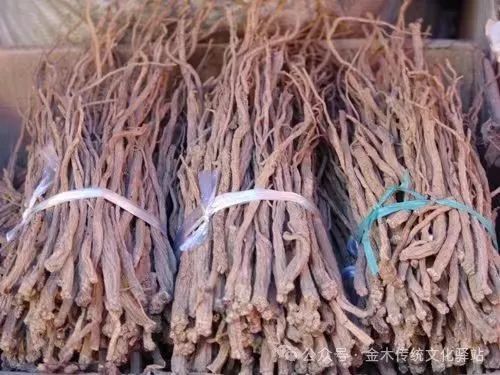
Benefits and Functions of Dang Shen
【Main Functions】
Tonifies the middle, benefits qi, generates fluids. Treats spleen and stomach deficiency, qi and blood deficiency, fatigue, poor appetite, thirst, chronic diarrhea, and prolapse of the rectum.
①《本经逢原》: “Clears the lungs.”
②《本草从新》: “Tonifies the middle and benefits qi, harmonizes the spleen and stomach, alleviates thirst.”
③《纲目拾遗》: “Treats lung deficiency, benefits lung qi.”
④《科学的民间药草》: “Blood tonic. Suitable for chronic anemia, jaundice, leukemia, glandular disease, rickets.”
⑤《中药材手册》: “Treats deficiency fatigue, internal injury, cold in the intestines and stomach, chronic diarrhea, wheezing and thirst, fever with spontaneous sweating, women’s uterine bleeding, and childbirth-related diseases.”
Usage and Dosage of Dang Shen
【Usage and Dosage】
Internal use: decoction, 9 to 15 grams, large dose 30 to 60 grams; can be made into syrup or used in pills and powders.
Precautions for Dang Shen
【Contraindications】
Contraindicated for those with excess pathogens. 《得配本草》: “Contraindicated for qi stagnation and excessive anger.”
Selected Formulas with Dang Shen
【Selected Formulas】
① Qing Fei Jin, tonifies original qi, opens the voice, aids muscle strength: 500 grams of Dang Shen (soft and sweet, sliced), 250 grams of Sha Shen (sliced), 200 grams of longan flesh. Boil in water to concentrate, drop water into beads, store in ceramic containers. Take one wine cup, mix with hot water, or add to decoction. (《得配本草》 Dang Shen Syrup)
② Treats diarrhea and postpartum qi deficiency with rectal prolapse: 6 grams of Dang Shen (remove the peel, stir-fried with rice), 4.5 grams of roasted Astragalus, 4.5 grams of Bai Zhu (White Atractylodes) (stir-fried), 4.5 grams of nutmeg powder, 4.5 grams of Poria, 6 grams of Huai Shan (stir-fried), 2.4 grams of Sheng Ma (honey-fried), and 3.5 grams of honey-fried licorice. Add two slices of ginger for decoction, or add 1.5 grams of prepared Aconite. (《不知医必要》 Dang Shen Qi Bai Zhu Decoction)
③ Treats cold damage to the spleen and stomach causing mouth sores: 6 grams of roasted Dang Shen, 6 grams of roasted Astragalus, 3 grams of Poria, 2.5 grams of raw licorice, and 4.5 grams of Bai Shao (White Peony). Boil in water and take warm. (《喉科紫珍集》 Dang Shen An Wei Powder)
④ Treats oral sores in children: 30 grams of Dang Shen and 25 grams of Huang Bai (Phellodendron). Grind into fine powder and apply to the affected area. (《青海省中医验方汇编》)
⑤ Inhibits or kills leprosy bacilli: equal amounts of Dang Shen, Zhong Lou (Zanthoxylum), and the bark of the thorny root (Corydalis). Grind Dang Shen and Zhong Lou into fine powder; boil the thorny root bark with an appropriate amount of water three times, concentrate the liquid to a certain amount (enough to moisten the fine powder), add an appropriate amount of honey, and mix the fine powders into pills, each weighing 9 grams; can also be made into a paste. Take three times a day, each time one pill, with warm water. (Beijing University of Chinese Medicine “New Medical Method Compilation”)
Pharmacological Effects of Dang Shen
【Pharmacological Effects】
① Effects on blood cells: Oral or subcutaneous injection of Dang Shen root extract can slightly increase the red blood cells and hemoglobin in normal rabbits; after splenectomy, the effect significantly weakens, suggesting that its “blood tonifying” effect may be related to the spleen. At this time, there is a tendency for white blood cells to decrease.
It is said that Bei Dang Shen does not have this effect. Dang Shen extract at a 1:40 ratio shows no hemolysis in test tubes, but can change color and cause turbidity and precipitation after acting on red blood cells.
② Effects on blood sugar: Subcutaneous injection of Dang Shen extract in rabbits can raise blood sugar; however, injecting fermented extract or administering it via gastric tube shows no such effect, suggesting that the increase in blood sugar is due to the high sugar content in the root; it also cannot inhibit neurogenic hyperglycemia caused by diuretics. Preliminary tests show that Bei Dang Shen can raise blood sugar when administered via gastric tube.
③ Hypotensive effect: Intravenous or intraperitoneal injection of alcohol or water extracts can lower blood pressure in anesthetized dogs; preliminary analysis suggests it is peripheral; it also has some anti-adrenergic effects; the water extract or alcohol-water extract can also lower blood pressure in anesthetized animals and inhibit the heart of isolated toads.
In chronic hypertensive dogs, daily administration of 4 grams (raw herb) per kilogram of water extract showed no hypotensive effect. Extracts or total saponins from roots of related plants, when fed to rabbits for a long time (40 days), can increase red blood cell count (17.5%) and body weight (23%); they can prevent and treat leukocytosis caused by turpentine; long-term oral administration showed no pathological changes in internal organs.
Total saponins administered orally to mice can enhance respiration in small doses and reduce the anesthesia of chloral hydrate; they may have some antagonistic effects against scopolamine.
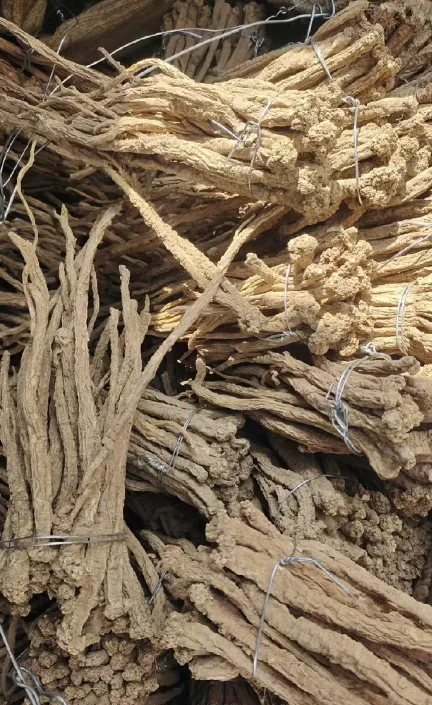
The Culture of Traditional Chinese Medicine is Profound and Extensive
Chinese medicine speaks of yin and yang; one cannot exist without the other. Where there is yin, there is yang; where there is up, there is down; where there is front, there is back; one thing overcomes another; no substance exists in isolation or without constraints! Maintaining the balance of the entire universe, each dimension has its own very strict system of checks and balances! Therefore, for every disease, there must be a corresponding medicine or method to subdue it!
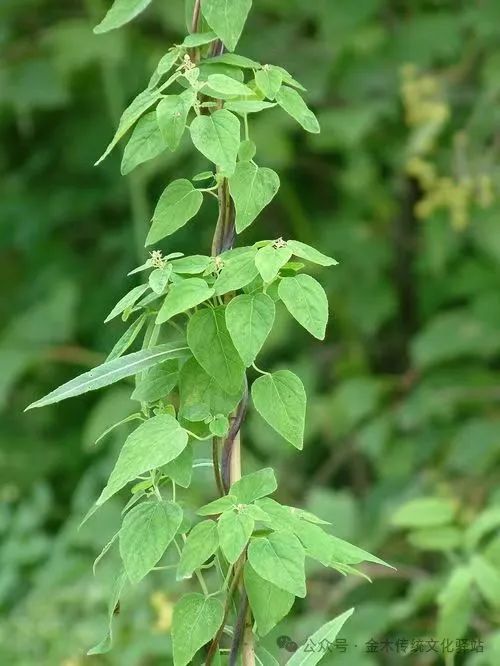

Spreading knowledge of TCM health preservation, promoting traditional Chinese culture, sharing health concepts, conveying care, and passing on health knowledge and traditional culture to more friends…
People are great because they have dreams; we are different because we have love.
Liu Ling Ning: 182 7127 1941 or (WeChat ID)
Yang Shun Song: 138 7171 7447 or (WeChat ID)
